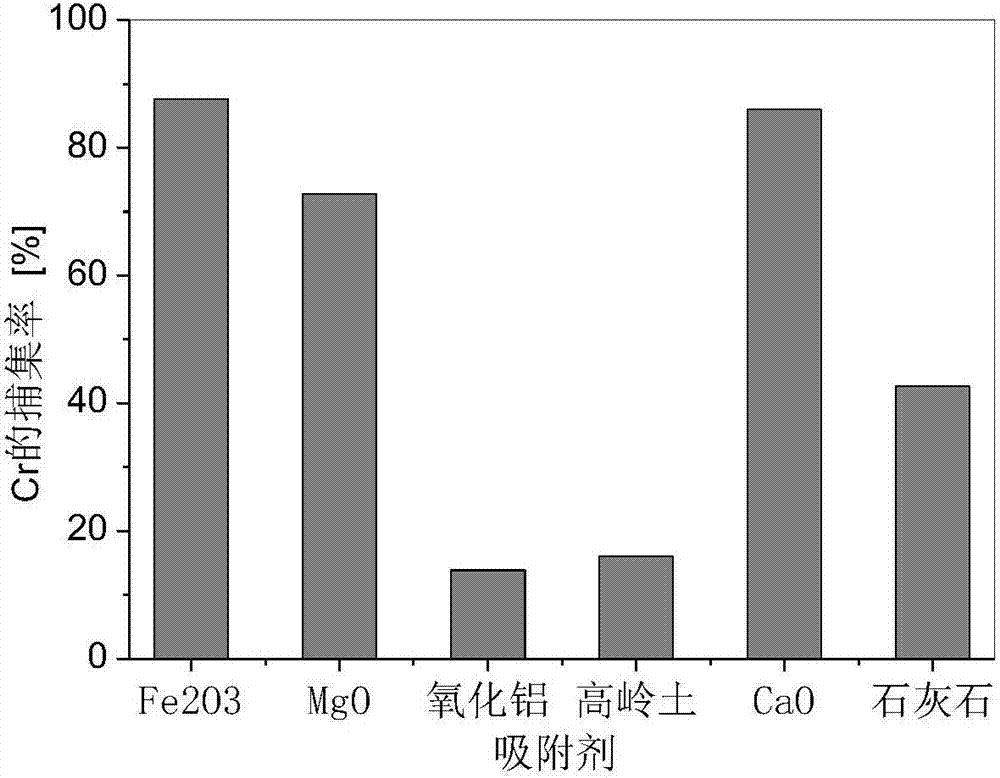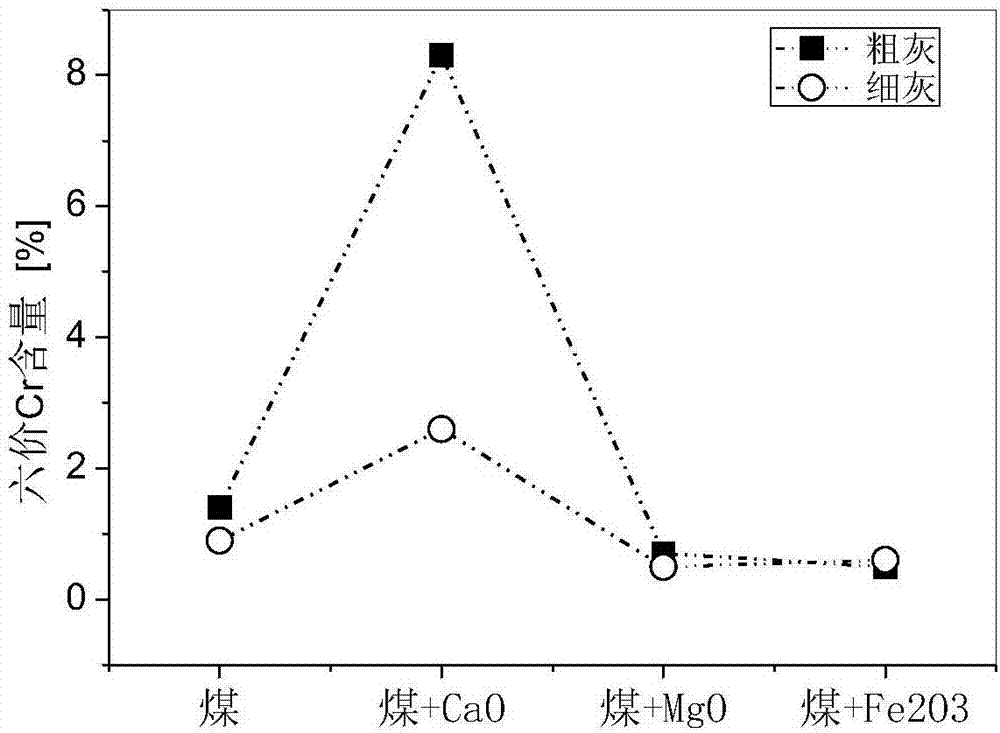Method for reducing emission of heavy metal chromium in burning process
A combustion process, heavy metal technology, applied in separation methods, other chemical processes, alkali metal compounds, etc., can solve the problems of little change, low capture efficiency, reduction, etc., and achieve high Cr removal efficiency, simple treatment method, and easy The effect of promotion
- Summary
- Abstract
- Description
- Claims
- Application Information
AI Technical Summary
Problems solved by technology
Method used
Image
Examples
Embodiment 1
[0038] Embodiment 1, carry out combustion experiment to certain low rank coal, adjust the coal feeding rate of the coal feeder to be 5g / min (by controlling the coal feeding rate and the sorbent injection rate, the desorption efficiency of Cr can be effectively guaranteed, and the waste of raw materials can be avoided ), at a place where the tail flue gas is 1000°C, spray Fe with a particle size of 5μm-75μm at a rate of 0.25g / min 2 o 3 Particles, experiment for 40min. After the collection experiment, the ash sample was digested to measure its Cr content and form, Fe 2 o 3 The capture rate of Cr reaches 88%, and the hexavalent Cr in the ash after combustion is reduced by 52%.
Embodiment 2
[0039] Example 2: Carry out a combustion experiment on a certain low-rank coal, adjust the coal feeding rate of the coal feeder to 5g / min, and inject the coal with a particle size of 5μm- 75μm MgO adsorbent, experiment for 40min. After the collection experiment, the ash sample was digested to measure its Cr content and form. The capture rate of Cr by MgO reached 73%, and the hexavalent Cr in the ash after combustion decreased by 49%.
Embodiment 3
[0040] Example 3, conduct a combustion experiment on a certain low-rank coal, adjust the coal feeding rate of the coal feeder to 5g / min, and inject the coal with a particle size of 5μm- 75μm CaO adsorbent, experiment for 40min. After the collection experiment, the ash sample was digested to measure its Cr content and form. Although the capture rate of Cr by CaO reached 86%, the highly toxic hexavalent Cr in the ash increased by nearly 4 times after combustion.
PUM
| Property | Measurement | Unit |
|---|---|---|
| Particle size | aaaaa | aaaaa |
Abstract
Description
Claims
Application Information
 Login to View More
Login to View More - R&D
- Intellectual Property
- Life Sciences
- Materials
- Tech Scout
- Unparalleled Data Quality
- Higher Quality Content
- 60% Fewer Hallucinations
Browse by: Latest US Patents, China's latest patents, Technical Efficacy Thesaurus, Application Domain, Technology Topic, Popular Technical Reports.
© 2025 PatSnap. All rights reserved.Legal|Privacy policy|Modern Slavery Act Transparency Statement|Sitemap|About US| Contact US: help@patsnap.com


